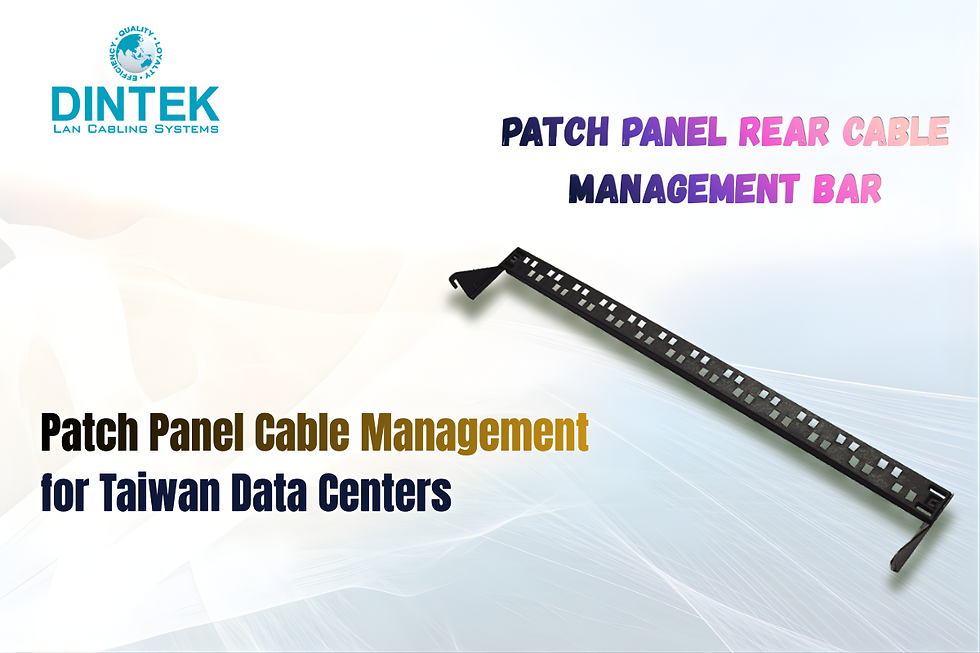Best Cat5e Rj45 Plugs Tips You Will Read This Year
- dinteklancabling
- Oct 25, 2024
- 3 min read
Choosing the best RJ45 plugs for your Cat5e cables can improve the quality of your network connections, reduce errors, and extend the lifespan of your infrastructure. Here, we’ve gathered the best tips on Cat5e RJ45 plugs to help you make the right choices for a reliable, efficient network setup.

Understand the Importance of Compatibility
When choosing Cat5e RJ45 plugs, compatibility is critical. While Cat5e is commonly used for Ethernet networks supporting up to 1 Gbps speeds, you’ll want to ensure your RJ45 plugs are specifically rated for Cat5e cables. Cat5e RJ45 plugs are designed to handle data transmission speeds up to 100 MHz and are backward compatible with older Cat5 systems, ensuring stable, interference-free connections.
Choose High-Quality Materials
RJ45 plugs come in various materials, with gold-plated contacts often recommended. Gold plating provides superior conductivity and resists oxidation, which helps prevent connectivity issues and improves signal quality. Look for RJ45 plugs made with durable plastic housings and quality metals for the contacts to ensure longevity.
Consider Shielded vs. Unshielded Plugs
Choosing between shielded and unshielded RJ45 plugs depends on the specific environment where your network is installed. If you are working in a high-interference area or an environment with many electronic devices, shielded plugs can offer additional protection against electromagnetic interference (EMI), which can disrupt signal quality. For less demanding environments, unshielded RJ45 plugs are typically sufficient and cost-effective.
Follow Best Practices for Termination
Termination is a critical process for reliable connections. When terminating Cat5e cables with RJ45 plugs, follow these steps:
Strip the cable jacket carefully to avoid damaging the internal wires.
Untwist and arrange the wires according to the T568A or T568B wiring standards, ensuring they align correctly.
Trim the wires to a consistent length, avoiding excessive bending.
Insert the wires into the plug, ensuring each wire is fully seated in its slot, then crimp the plug firmly. These steps minimize crosstalk and signal loss, resulting in a more stable connection.
Use Proper Crimping Tools
High-quality crimping tools are essential for effectively attaching RJ45 plugs to Cat5e cables. A good crimping tool will apply even pressure and prevent damage to the plug and the cable. Invest in a reliable tool with interchangeable heads for versatility and ease of use, especially if you are frequently installing or repairing cables.
Test Each Connection
Testing is crucial to ensure each cable and RJ45 plug is correctly installed. Using a cable tester can help you quickly verify connectivity and identify any wiring faults, such as crossed or shorted wires. Regular testing can prevent network downtime by catching potential issues before they affect your setup.
Select a Reliable Brand for RJ45 Plugs
The brand you choose for RJ45 plugs can impact your network’s performance. Reputable brands like DINTEK are known for their quality and reliability, ensuring consistency and reducing the risk of future connectivity problems. DINTEK RJ45 plugs offer high-quality materials and precision engineering that make them an ideal choice for any professional network setup.
Keep Cables and Connectors Organized
Cable organization is often overlooked but is essential for maintaining a stable, easy-to-manage network. Use color-coded connectors, cable management solutions, and labels to keep your network infrastructure organized, reducing the likelihood of connection errors or downtime during maintenance.
Future-Proof Your Network
While Cat5e is an effective solution for many applications, consider future-proofing by preparing for higher categories, like Cat6 or Cat6A, especially if you anticipate network expansion or increased data demands. Selecting RJ45 plugs compatible with newer standards can save you time and effort if you decide to upgrade your cables later.
With these tips, you’re well on setting up an efficient and reliable network with Cat5e RJ45 plugs. By focusing on compatibility, quality materials, and proper installation techniques, you’ll achieve a connection that stands the test of time. Whether upgrading an existing network or setting up a new one, following these best practices will ensure a robust, high-performance infrastructure.



Comments